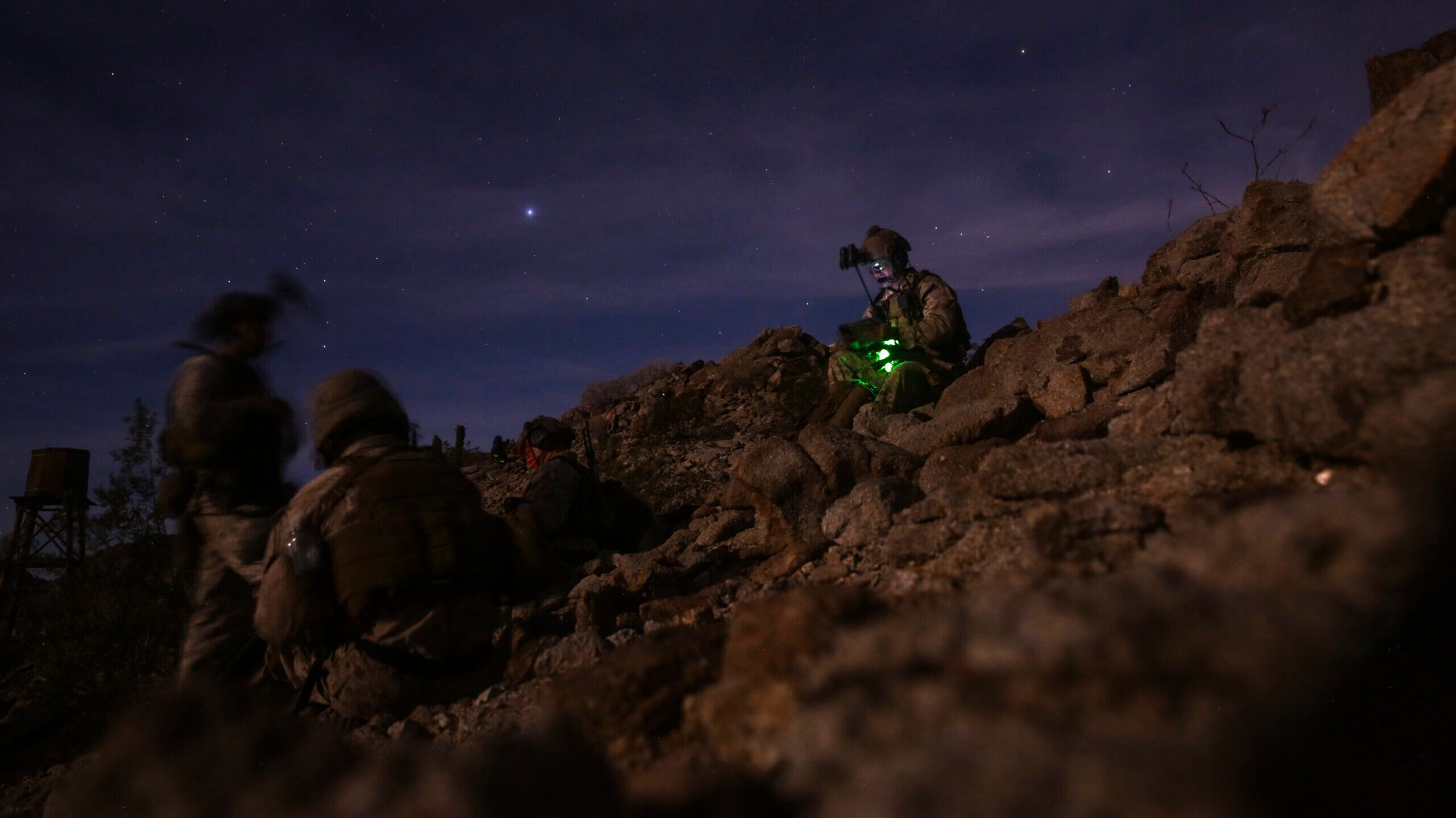VALERIE INSINNA

WASHINGTON — Twenty two months after taking office, the Biden administration finally released its National Security Strategy, ending a drawn out process that was compounded by Russia’s invasion of Ukraine in February.
On the whole, the strategy provided few major surprises. Concerns about the rise of China — and the threat the autocratic state poses to both its neighbors and the United States — continue to be the largest national security focus for the administration. And while the war in Ukraine has brought a sense of immediacy and greater attention to threat still posed by Russia, National Security Advisor Jake Sullivan said Wednesday that the conflict didn’t result in any major alterations to the strategy.
However, the devil is always in the details, defense experts told Breaking Defense. Here’s what they see as the major takeaways.
The Concept of ‘Integrated Deterrence’ Might Already Be In Trouble
While an unclassified version of the National Defense Strategy has not been released yet, Pentagon officials — including Defense Secretary Lloyd Austin in a statement on the NSS made earlier today —have made clear that a cornerstone of the NDS will be a concept called “integrated deterrence,” which calls for the US military to work with other US government agencies as well as international partners to impose whole-of-government penalties on an enemy.
“We will rely on integrated deterrence, as detailed in the Department’s National Defense Strategy, which will soon be released in unclassified form,” Austin said in the statement, defining the concept as “seamlessly combin[ing] our capabilities to convince potential adversaries that the costs of their hostile activities far outweigh any possible benefits—in all theaters, in all domains, and across the spectrum of potential conflict.”
But while “integrated deterrence” was mentioned in the NSS, it is cited only in a section on US military modernization, which could point to it being a Defense Department concept that won’t be widely adopted by other government agencies, said Stacie Pettyjohn, director of the defense program at the Center for a New American Security.
“Integrated deterrence, in my view, always made the most sense as a centerpiece of the National Security Strategy where the DoD part focuses on the high-end deterrence,” she told Breaking Defense.
And while the NSS does “more narrowly conscribe” the Defense Department’s portion of integrated deterrence as the traditional backstop of conventional and nuclear capabilities, the concept “didn’t seem to be the centerpiece of it the way that one might hope, since integrated deterrence includes a focus on all of the tools of government, and for that to happen that’s beyond the DoD’s remit,” she said.
The definition of integrated deterrence in the strategy also failed to resolve a major question about the concept, according to Pettyjohn: Does threatening an adversary with so many potential forms of punishment actually make the United States more credible, particularly in a situation where the US will not actually follow through with all courses of action?
“If it’s this huge encompassing of all things, I think that actually sort of makes it harder to have an explicit and credible deterrent threat that allies and adversaries understand,” she said.

U.S. Marines with 2nd Marine Raider Battalion, Marine Raider Regiment set up communication during a night raid exercise at landing zone Dodo, Ariz., April 21, 2016. (U.S. Marine Corps/Zachary M. Ford)
Ye Olde ‘Strategy Versus Reality’ Problem
The NSS paints a complex and troubling challenge for the United States, which finds itself at the beginning of a “decisive decade” where it must contend with the threat of near-peer competitors like China and Russia, while at the same time mitigating problems like inflation, pandemics, climate change and other issues that threaten American prosperity and that of nations worldwide.
Bradley Bowman, senior director of the Foundation for Defense of Democracies’ center on military and political power, said the strategy does a good job of describing the scope and urgency of the problems facing the United States. However, it lacks detail on how the administration plans on implementing solutions that will ensure that the nation is able to meet its strategic aims.
“I agree that we’re at an inflection point. I agree that this is a decisive decade,” he said. “But when I look at into details — when I look into our force posture, when I look at the insufficient defense budgets, when I when I look at how we’re not procuring vital weapons systems at max production capacity … I see a large and increasingly dangerous gap between words and actions.”
The Biden administration needs to be honest about where it faces risk and ensure that it does the work to mitigate capability gaps and fix potential vulnerabilities, he said.
“What are urgent Indo-Pacific requirements that are not being met right now?” he said. “If you say this is an inflection point or decisive decade, I think the burden of proof is on this administration to explain any cases where they’re disregarding serious requirements in particularly [US Indo-Pacific Command], but also [US European Command],” he said.
Emma Ashford, a senior fellow with the Stimson Center, compared the scope of the NSS to “Lean In,” the popular self-help book for women in the workplace by Facebook’s former Chief Operating Officer Sheryl Sandberg that posited that women could find massive success in all areas if only they would “lean in” to a bigger workload.
But people — and nations — face constraints, Ashford said, and if the US doesn’t have the resources or capability to meet its strategy goals, it needs to moderate those goals.
“The NSS wants to have it all: competition with China, containment of Russia, building global coalitions on climate change, and pandemics; shared democracy as a unifying principle and democracy promotion while continuing to work with autocracies, a diplomacy first approach while maintaining global military primacy; using trade as a core component of foreign policy while rejecting new trade agreements that don’t ‘level the playing field;’ building on existing alliances while establishing new ones,” she wrote on Twitter.
In short, the NSS “acknowledges that we live in an increasingly multipolar world, accepts that there are limitations to U.S. power, and then doesn’t change policy in response,” she said.
Climate Change Is a Top Priority…And the GOP Won’t Like That
Compared to the Biden administration’s interim strategic guidance in March 2021, the National Security Strategy emphasizes the competition between democracies like the United States and authoritarian regimes like its rivals, China and Russia — a change likely due to Russia’s invasion of Ukraine, said Mark Cancian, a senior adviser with the Center for International and Strategic Studies’ international security program.
There’s a greater concern with “irredentism — the fact that Russia and China are unsatisfied with their current borders and aiming to maybe expand them,” he said. However, he added that the strategy’s descriptions of China and Russia suggest a difference in tone rather than a substantive change in policy.
Like the Trump administration’s 2017 strategy, the Biden-era NSS continues the focus on China as the single largest military and economic threat to the United States and similarly declares a need to modernize the military and invest in American technology, Cancian said.
However, the strategy’s attention on progressive causes — specifically climate change, which the document says is the “greatest [problem] and potentially existential for all nations” — will likely draw the ire of Republicans, who may argue that the focus should remain solely on competition against China and Russia, Cancian said.
“Climate is mentioned [about] 65 times in the document,” he said. “Of course, this is very different from the Trump national security document where they talked about energy dominance and encouraging fossil fuel production.”
Several top Democrats have already released public statements expressing support for the NSS. House Armed Services Committee chairman Adam Smith, D-Wash., said the document is “right on target,” while his counterpart, Senate Armed Services Committee chairman Jack Reed, D-R.I., called it a “strong, thoughtful vision for advancing America’s interests.”
Meanwhile, Republicans are starting to level criticism at the strategy. Alabama Rep. Mike Rogers, HASC’s ranking Republican, blasted the document for asserting that the United States should be willing to work with China and Russia on areas where they share common goals with the US.
“The strategy produced by the Biden administration takes 48 pages to say nothing. It is based in a fantasy world where all nations, even adversaries, work together to advance the common good,” Rogers said in a statement. “Our adversaries are dangerous, they don’t care about the common good, and they don’t want to work with us to achieve altruistic goals – they want to destroy us.”
No comments:
Post a Comment